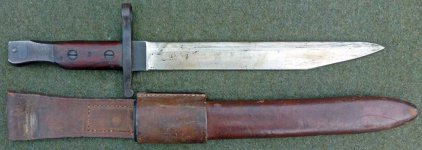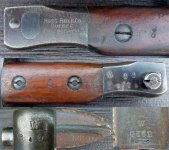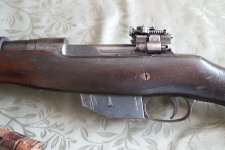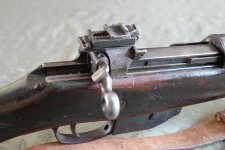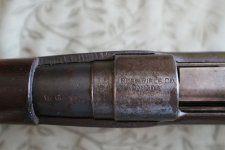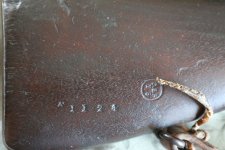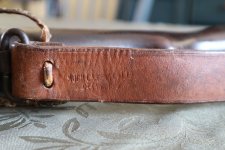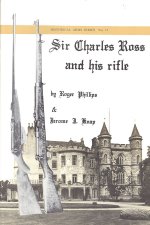Lost Skeleton
Well-known member
It has been so long since I've contributed to the forum, I thought I should get my sea legs back. Photobucket has changed dramatically in the interim, so we'll see whether this Luddite can adapt to the times.
The infamous straight-pull Canadian Ross rifle appears to be undergoing a reevaluation at present — at least there are are number of YouTube videos that suggest as much — and I had been wanting to get my hands on a specimen for some time. The rifle I purchased recently is quite decent: a small, hairline crack in the hand guard and a missing stack swivel appear to be the only debits. Furthermore, the M-10 retains its original sling, which is something one would be hard-pressed to replace. The barrel and action are fouled with cosmoline and will require a thorough cleaning. Though strong and supple, the sling was heavily mildewed in places, and this received my immediate attention. It was cleaned with Carr & Day & Martin Belvoir Tack Cleaner, which contains an anti-fungal to inhibit mold and mildew. Spray-on, wipe clean with cotton terry, and buff with a horsehair brush — I repeated the drill three times until I was satisfied the microbes had been vanquished. Anyway, here she is:

Manufactured in 1916, This Mk III is the end result of all the modifications required to make the rifle safe and effective. It just wasn't meant to be…
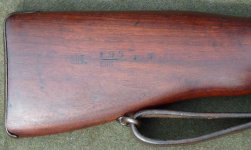

The bolt is case hardened (one can see the old cosmoline on the rear sight):

The breech and (undented) magazine:
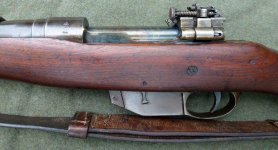
Finally, the sling dated 1916. It is secured to the lower band swivel by a simple hide lace string knotted in a figure eight:
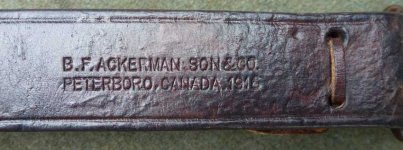
Anyone having Ross rifle stories to share will find me most interested.
Chas
The infamous straight-pull Canadian Ross rifle appears to be undergoing a reevaluation at present — at least there are are number of YouTube videos that suggest as much — and I had been wanting to get my hands on a specimen for some time. The rifle I purchased recently is quite decent: a small, hairline crack in the hand guard and a missing stack swivel appear to be the only debits. Furthermore, the M-10 retains its original sling, which is something one would be hard-pressed to replace. The barrel and action are fouled with cosmoline and will require a thorough cleaning. Though strong and supple, the sling was heavily mildewed in places, and this received my immediate attention. It was cleaned with Carr & Day & Martin Belvoir Tack Cleaner, which contains an anti-fungal to inhibit mold and mildew. Spray-on, wipe clean with cotton terry, and buff with a horsehair brush — I repeated the drill three times until I was satisfied the microbes had been vanquished. Anyway, here she is:

Manufactured in 1916, This Mk III is the end result of all the modifications required to make the rifle safe and effective. It just wasn't meant to be…


The bolt is case hardened (one can see the old cosmoline on the rear sight):

The breech and (undented) magazine:

Finally, the sling dated 1916. It is secured to the lower band swivel by a simple hide lace string knotted in a figure eight:

Anyone having Ross rifle stories to share will find me most interested.
Chas
Last edited:

